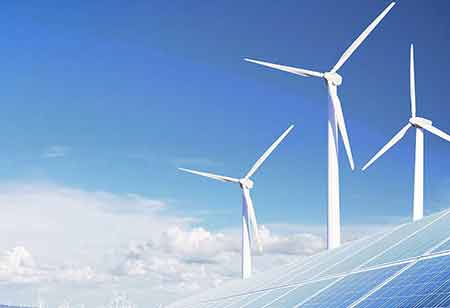Thank you for Subscribing to Energy Business Review Weekly Brief
Revolutionary Energy Efficiency Innovations To Watch Out For!
On the other hand, a vast population will be left behind with minimal access to the primary

By
Energy Business Review | Wednesday, August 17, 2022
Stay ahead of the industry with exclusive feature stories on the top companies, expert insights and the latest news delivered straight to your inbox. Subscribe today.
A world running on a renewable energy system sounds as exciting as utilizing it. Once the cost and performance standards of the resources begin to improve, people will witness a growing demand for them across the globe.
FREMONT, CA: With days, the energy consumption by people is expected to climb from what it is today. Places with access to reliable and affordable forms of energy will become prime locations to acquire a superior standard of living.
On the other hand, a vast population will be left behind with minimal access to the primary energy services in this changing climate. Speculations concerning future needs gave rise to innovations that can be of great support for both the increasing demand for humans as well as contributes to climate control.
The Innovation of Energy:
Energy is studied to be the most basic and significant need worldwide. Cities, towns, schools, and commercial areas use energy to keep running without interference. The pressure to develop low or no-carbon tech has increased drastically in the world, facing a desperate need to modify its energy systems.
Urbanized countries like the U.S. have already altered their consumption patterns. Otherwise, some companies have begun incorporating clean energy, which is difficult to access and way beyond the affordability of developing countries.
Today’s clean energy technologies such as solar, wind, electric vehicles, smart grids, and energy storage systems are expensive. Hence, it is essential to find a way out of these costly technologies and make renewable energy sources available to the world cost-effectively. Different companies have developed innovative, cost-effective, proven energy-saving systems to facilitate people with such sustainable solutions.
Crucial Energy Innovation Trends:
Technological developments affect every sector in the industry, such as the smart grid, energy storage, and electricity generation.
For example, wind and solar power are two rich energy sources because of their exclusive storage requirements for batteries. Moreover, in cities and states, the presence of a smart grip can help regulate the flow of energy. Moreover, the improvements in electricity generation can enhance efficiency by employing fossil fuels and renewable sources.
It is likely with the latest trends, which contribute not only to energy saving but also successful solutions to meet the demands of energy needs.
Energy Storage Amenities:
It is easier to meet the demand and balance the power supply if there is a sufficient amount of energy stored. The availability of an ample amount of energy can be considered the key to handling the irregular challenges of any renewable power. Combining the energy storage system with a renewable source can offer a seamless and stable power supply, even during unfavorable climatic conditions.
It is always perfect to have batteries to store energy unless they go out of the budget. People can alternatively look for affordable energy storage technologies launched by different companies. It is approximated that rising technologies now will have energy storage as the central component.
It will induce a situation where storage solutions, comprising domestic energy and utility-scale, will become price competitive by surpassing the advantages of usual energy sources. It has begun in various parts of the world where worn-out electric car batteries are being reused to produce grid energy storage.
AI in Microgrids:
Microgrids are local energy grids that operate freely or combined with a largely-built conventional network. The grids are one of the best forms of energy-saving as they offer energy independence and competence.
With the support of ML, AI with microgrid controllers can endorse operation advancements even while experiencing constant adaptation. The technique is now widely-adopted as it also aims to deliver productivity with almost 90 percent lesser time and expense than traditional methods.
IoT and Blockchain:
Currently, blockchain is not restricted to cryptocurrency and is used by different industries and marketplaces. It is incorruptible and distributes information on a peer-to-peer network system.
By leveraging the technology in the energy system, companies can dump the need for a middleman for electricity suppliers and resolve unproductive and uneven energy problems distribution.
Furthermore, blending distributed ledger with the devices used daily, which receive and convey data, brings the Internet of Things (IoT) into the landscape with a significant impact on energy systems.
Leveling Grid Cost-Effectively:
Grid parity occurs when alternative energy can generate power at the same or lesser cost than traditional methods. Solar and wind energy have achieved parity in both performance and price.
To be precise, renewable energy sources are turning more efficient and self-optimized chiefly due to new technologies like blockchain and AI, which make the integration of grids easier.
They also significantly contribute to efficiencies in strengthening the dependability and flexibility of the grids. With the developing technologies in the future, solar and wind energy might get more capable and cost-effective, and renewable energy methods will be preferred more than usual.
Substituting Fossil Fuels:
Several countries are introducing emission-reduction goals, comprising climate action plans to productively face the increase in global temperature. Surveys have made it apparent that more than 70% of the corporate and municipal sectors utilize energy produced from renewable resources. Many companies are now willing to shift from the traditional method of using fossil fuels to a 100% renewable energy system for their operations.
Improved Energy Management:
It is prominent that the energy demand has been increasing over the years, and it has negative possibilities of decreasing in the future. Hence, keeping in mind the scenario, it is ideal for the industry leaders and manufacturers to gather together and settle on new standards that can help businesses in the industry to achieve a superior energy management system function.






